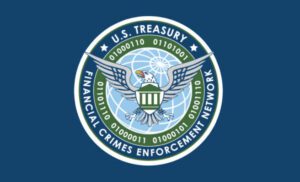Proactive Strategies to Combat Mobile Fraud in Banking
As financial institutions fortify email defenses against phishing, fraudsters are shifting to smishing (Short Message Service [SMS] phishing) and vishing (voice phishing). These tactics exploit mobile channels and human trust, targeting customers—and increasingly employees—in highly effective social-engineering schemes. For bankers responsible for operational resilience, customer protection, and compliance, understanding these threats and implementing defenses is essential.
The Evolving Threat Landscape of Smishing & Vishing
Smishing involves deceptive text messages (“Your account is locked”) that prompt the recipient to respond or click a malicious link. Vishing uses spoofed voice calls or interactive voice response (IVR) systems to impersonate bank staff or government agents, coaxing victims to divulge credentials or send money.
A 2025 FBI alert reported in the American Banker highlights the explosive growth of smishing. Messages impersonating toll and package-delivery alerts surged as thousands of malicious domains were created to steal unsuspecting citizens’ credentials. Cities like Dallas, Atlanta, Chicago, Los Angeles, Houston, Phoenix, and Seattle experienced a fourfold increase in smishing since early 2025, according to the New York Post.
On the voice side, a Security Magazine article reports that vishing surged 442 percent in 2024, with attackers increasingly using AI-driven voice tools and social engineering to deceive targets. The resulting corporate fraud losses averaged $123,000 per incident.
Consumers, too, were victimized in staggering numbers. In 2021, more than 59 million Americans fell victim to vishing schemes, suffering losses near $30 billion, a year-over-year increase approaching 50 percent.
Why Smishing and Vishing Severely Impact Banks
Smartphone Trust and Scale
Mobile banking drives trust in SMS and voice alerts. Smishing attackers exploit this confidence, as noted in the American Banker, by:
- Sending high volumes of unsolicited texts
- Embedding texts with unconventional Top-Level Domains (TLDs), such as .click, .info, and .top, rather than the more common .com, .org., .edu, and .gov
- Urging users to copy–paste links, thereby bypassing built-in protections
CallerID Spoofing and IVR
Vishing leverages callerID spoofing and automated systems to simulate bank systems. Fraudsters may blanket a bank’s customer base by area code with texts that instruct recipients to call back and then route them to a spoofed IVR. Cisco/RSA found vishing increasingly targeting smaller banks, according to Keepnet Labs, a Seattle cybersecurity consultancy.
Customer Psyche
These attacks exploit fear and authority. A text claiming fraud or a call saying “your account is frozen” triggers an emergency response. Thieves rely on the faux danger being compelling enough to create panic that may lead bank customers to bypass more rational reactions.
Common Smishing and Vishing Tactics in Banking
Both Keepnet Labs and the New York Post identify some of the more nefarious smishing and vishing tactics currently threatening bank operations:
- Local-area smishing campaigns: Attackers target specific banks by area code, issuing urgent texting alerts. Some originate from five-digit or unfamiliar numbers that customers believe are legitimate
- Spoofand-call loops: A smishing link instructs the victim to call a number once clicked. That number routes to a spoofed IVR port, asking “Enter your PIN” or “Call agent.” From that point forward, attackers can capture all input
- Deepfake vishing: Accelerating in 2025, AI-powered callers can mimic employee voices or bank messaging, deceiving even tech-aware individuals
- Domain farms: To obscure detection, fraudsters have registered more than 10,000 malicious websites using obscure or exotic TLDs, making detection and takedown difficult
Bank-Level Best Practices for Prevention
To counter these threats, sources that include the American Banker advise that banks must pursue a three-pronged strategy: Detect, Deter, and Educate. This protective trilogy should be ingrained organization-wide into operations, channels, and customer programs.
Detect: Monitoring and Multi-Factor Controls
- SMS Traffic Monitoring: Partner with mobile/telecom providers to monitor SMS traffic volume anomalies. Detection platforms like mCom monitor “exceptional use” that could signify outbound smishing
- Caller ID-Fraud Controls: Support STIR/SHAKEN implementation and use anti-spoofing platforms to flag spoofed numbers (common among vishers)
- IVR Anomaly Detection: Monitor for recurring prefix/bridge patterns or influx of inbound calls expecting PIN entry. Automate flags when an unusual number starts receiving calls from known customers
- Anti-Smishing Filters: Though carriers filter only 25–35 percent of malicious texts, commercial solutions (bank‐provided mobile apps or alerts) can block known bad domains or unusual link patterns
Deter: Authentication and Transaction Control
- Mutual Authentication: Let customers initiate secure channels before accepting transaction commands via SMS/call. Push app-based confirmation flows or voice print authentication layers
- Transaction “Cooling” and OutofBand Checks: For mobile-initiated push payments or high-risk transactions, introduce time delays or outbound call verifications. Require OTP validation by authenticating to both ends.
- Segmented SMS Channels: Use only verified short-codes for transactional alerts. Unrecognized numbers should be treated as urgent fraud signals. Educate customers that fraud alerts will never come from random five-digit numbers
- AIPowered Content Scanning: Deploy NLP engines and pattern recognition to scan inbound SMS where possible, flagging quarantine-worthy messages. Enterprises increasingly implement ML solutions for mobile fraud detection
Educate: Training and Customer Communication
- Frequent Customer Alerts: Inform customers through statements, email, SMS, and app notifications about smishing/vishing vectors. Emphasize that the bank never requests credentials or OTP via SMS or call
- Employee Phishing Simulations: Include vishing scenarios in staff training alongside email phishing drills. Community banks using STOP-style programs saw notable gains in branch security awareness
- “Opt-In” Alert Protocols: Allow customers to verify suspicious text alerts before clicking. Publicize a dedicated anti-fraud hotline protocol such as: “If you received a text, SMS 12345 ‘VERIFY’ and the last four digits of your account to 800BANK”
- Reporting and Feedback Loop: Encourage both customers and associates to report smishing links or calls. Collating customer-submitted URLs aids in blocking those domains rapidly. Coordinate with the Internet Crime Complaint Center (IC3) and law enforcement to flag attack methods
Measuring Success and Reporting to Regulators for Fraud Prevention
KPIs to Monitor
- Volume of suspicious SMS traffic flagged
- Number of inbound “VERIFY” requests
- Staff performance on smishing/vishing tests
- Customer-reported incidents and prevented fraud metrics
Regulatory and Examination Alignment
- Demonstrate Information Security control efforts to regulators (OCC, FDIC, CFPB) citing logs, alerts, and customer education efforts
- Highlight aspiration to meet NY DFS cybersecurity requirements
- For reports to examiners, cross-reference FTC/FDIC and FBI findings on smishing/vishing growth
Preparing for Next-Gen Attacks: AI & Automated Vishing
Recent research from Cornell University demonstrates that fully AI-automated vishing bots—capable of carrying convincing conversations—are viable and already deceiving targets.
As these threats continue to emerge, banks should:
- Consider audio-jamming tools that disrupt automated speech-to-text, while remaining transparent to human speakers
- Encourage carriers and industry groups to share voice-attack data as part of the Financial Services Information Sharing and Analysis Center or the Cybersecurity and Infrastructure Security Agency
- Monitor for fraudbot activity flagged by advanced caller ID analytics
Essential Defense Against Mobile Bank Fraud
Smishing and vishing now represent the frontline threats mobile-first fraud poses to the banking industry. The explosive increase in domain-generated scams, deepfake audio callers, and exploitative social engineering requires a bank-centric response:
- Detection: SMS/voice channel monitoring and caller ID controls
- Deter/Authenticate: Mutual authentication, OTP, and transaction cooling
- Educate and Simulate: Staff training and public education
- Innovate: Deploy AI-based anomaly detection and audio defenses
- Report and Refine: Share incidents, report changes, and revise controls
For bankers, the mission is clear: Don’t just lag scammers—outpace them. Embedding smishing and vishing awareness into fraud protocols, customer journey design, and staff culture is the key to defending a bank and its community, not merely meeting compliance requirements, but staying ahead of mobile-first financial crime.



















